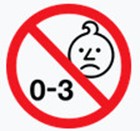New EU Toy Safety Regulation – EU Commission proposal
On 28 July 2023, the European Commission published its proposal for a new EU Toy Safety Regulation (the “Proposal”) to replace the current EU Toy Safety Directive 2009/48/EC.
The most important changes for trade and industry
As expected, the Proposal includes significantly stricter chemical requirements for toys. It also introduces a “digital product passport”. By adding to and specifying details of the current legal situation, overall it will result in an increase in regulatory requirements. When European toy law is linked with the requirements of the new General Product Safety Regulation (EU) 2023/988, which only recently entered into force, stricter requirements will also apply to reporting obligations to authorities and product recalls.
Entry into force and transitional period
The Proposal provides for a transitional period of 30 months as of entry into force, which means that compliance with the new requirements will probably not be mandatory until 2027. A transitional period of another twelve months is currently planned for selling toys that were on the market before the compliance deadline.
Digital product passport
The new Toy Safety Regulation could be the first sectoral European harmonising regulation to introduce a digital product passport.
The digital product passport is intended to replace the EU declaration of conformity and to remain available in a digital product passport registry established by the EU Commission for market supervisory authorities, customs offices and consumers alike for at least ten years after the last toy of a particular model has been placed on the market. With a digital product passport, the manufacturer declares that its toy conforms to the requirements of the new Toy Safety Regulation and with all other applicable European laws. For example, it will be made available using a QR code and will include information such as a clear product identification code for the product, the name and contact address of the manufacturer, a clear company identification code and the customs tariff number. It will also list all fragrances for which the new Toy Safety Regulation requires special labelling and all “substances of concern” contained in the toy.
The Proposal does not require any other information, for example related to sustainability. In this context, the Proposal refers to the expected European-level requirements of the new Ecodesign law.
New obligations for economic operators
One aspect that will be significant in practice is the increase in “manufacturers’ labelling” requirements. Manufacturers and importers will have to list not only their names and complete contact addresses but also an email address on the toys. It is not possible to ascertain why it is (still) not possible to do without the mailing address despite the generally accessible digital product passport; industry stakeholders would do well to pose critical questions in this regard during the ongoing legislative process.
Manufacturers will also have to provide the public with a telephone number, an email address, a special place on their websites or another fully accessible means of communication by which consumers can contact them regarding safety complaints. Importers must verify that such communication channels exist and, where necessary, add them if a non-EU manufacturer has not complied with this requirement.
Link to the requirements of the General Product Safety Regulation (EU) 2023/988
Very important increases in economic operator’ obligations arise from the fact that the Proposal is linked to the newly applicable General Product Safety Regulation (EU) 2023/988 that applies to all toys as of 13 December 2024 regardless of when the new Toy Safety Regulation enters into force:
- Under Article 20 of the General Product Safety Regulation, manufacturers, importers and dealers will be obliged in graduated steps to inform the competent market supervisory authorities regarding accidents in connection with a product that they have placed on the market and of which they have become aware. These operators are currently only required to report to the authorities if they know or should have known that their product entails a specific safety risk in the field.
- When conducting product recalls, companies will have to offer consumers remedies (free repairs or replacements, compensation for lost value) regardless of how old the recalled product is. This will make product recalls expensive and raise the question as to whether a recall might occasionally be “dispensed with” due to these expenses.
- Requirements regarding specific details of recalls and comparable measures will be strict. For example, according to Article 36 of the General Product Safety Regulation (EU) 2023/988, it will be strictly prohibited to use wording such as ‘voluntary’, ‘precautionary’, ‘discretionary’, ‘in rare situations’ or ‘in specific situations’ in a recall notice. These micro-requirements on the part of legislators will likewise probably not contribute to the likelihood that companies will prematurely decide to take corrective measures which could actually be helpful.
CE marking and warnings
The requirements for affixing the necessary labels and warnings are likewise important for the design of products and their packaging.
Where the CE marking affixed to a toy is not visible from outside the packaging, it will also have to be affixed to the packaging. In addition, any necessary warnings, particularly the warning of unsuitability for children under thirty-six months of age (see figure) will have to be placed after the CE marking (Article 16(3) of the Proposal). In contrast, one simplification is that warnings will no longer have to be preceded by the word “Warning” (in all necessary languages) and that the pictogram found in Annex III, point 1 (exclamation point in a red triangle) can be used instead.
Stricter chemical safety technology requirements
The “general safety requirement” in the Proposal goes beyond the aspects designated up to now in Article 10 of the EU Toy Safety Directive 2009/48/EC in that it will include children’s psychological and mental health, wellbeing and cognitive development (Article 5 of the Proposal).
In the “particular safety requirements”, especially the chemical requirements governed by Part III of Annex II will be stricter. In future, the use of CMR substances in toys will continue to be prohibited, but this prohibition will also apply to substances related to endocrine disruption, respiratory sensitisation or specific target organ toxicity. In contrast, compared to the current legal situation, the regulations regarding chemical requirements for toys in the Proposal for the new Toy Safety Regulation are significantly simpler and include exceptions. For example, in Part III of the Appendix to Annex II, migration limits that are also to apply for older children, for example, will not apply to toys or components of toys which clearly exclude any risk due to sucking, licking, swallowing or prolonged contact with skin when used as specified.
Well
informed
Subscribe to our newsletter now to stay up to date on the latest developments.
Subscribe now








